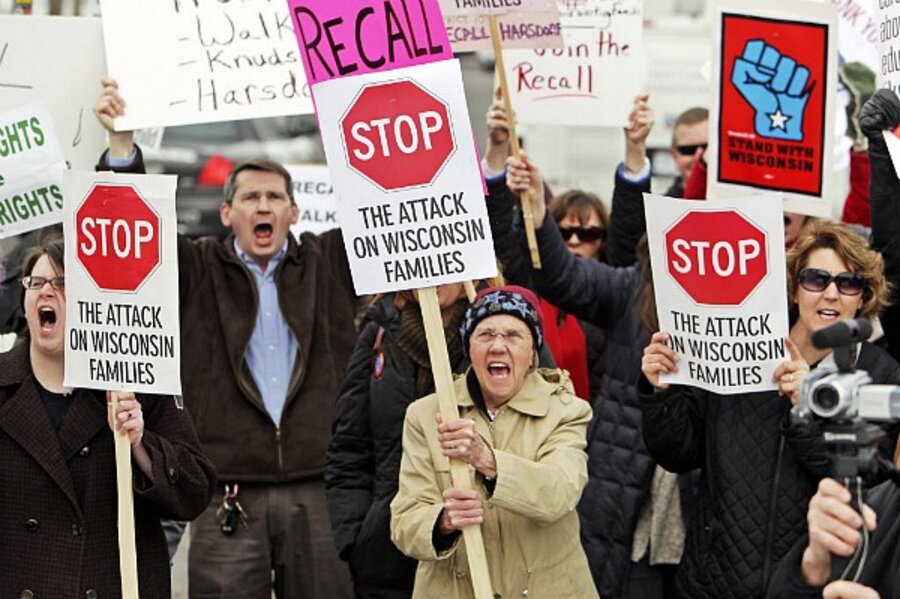Triangle Shirtwaist fire: 100 years later, how are unions perceived?
Loading...
The Triangle Shirtwaist Factory fire 100 years ago Friday helped bring about workplace protections, and it provided impetus to the emerging US labor union movement.
Francis Perkins, who witnessed the blaze that killed 146 garment workers – most of them immigrant women – and who later became Franklin D. Roosevelt's secretary of Labor, called it "the day the New Deal began." It was during this era that the National Labor Relations Act began prohibiting unfair labor practices.
Meanwhile, labor unions – sometimes in violent confrontation with mill and mine owners – organized into powerful political forces, changing the way of work across the country (bringing a two-day weekend, for example) and spreading to service sectors of the economy and to government bureaucracies.
As the major union-management confrontations subsided – one notable exception being air-traffic controllers early in the Reagan administration – the public grew generally supportive of labor unions.
As the economy faltered, union support waned
But in recent years, and as the economy has faltered, unions have lost public support.
“In 2009, Gallup found union approval dropping to 48 percent, an all-time low in its series dating back to the 1930s,” writes Jodie Allen of the Pew Research Center in an analysis this week.
In a survey in February, Pew found that most Americans still see unions having a positive effect on salaries, benefits, and working conditions. But the survey also found people divided on whether unions have a positive or negative effect on workplace productivity (34 to 30 percent) or whether they increase the availability of good jobs (32 to 33 percent).
“Most tellingly … the survey found only 45 percent expressing an overall favorable view of labor unions – close to the lowest level in a quarter century – while 41 percent held an unfavorable view,” writes Allen.
These days, public and political focus has been on public employee unions.
It’s not just their numbers – government employees are more than twice as likely to be union members than are private sector workers, 35 to 13 percent, according to the Gallup polling organization. It’s that they’ve been targeted as the cause of state financial woes by Republican governors such as Scott Walker in Wisconsin and Chris Christie in New Jersey.
Partisan divide over collective bargaining
Fights there and in other states over public employee unions – especially regarding collective bargaining – has become very partisan, Gallup finds.
“These differences are large,” Gallup editor-in-chief Frank Newport wrote recently. “Last year, 71 percent of Democrats nationally approved of labor unions, compared to 49 percent of independents, and just 34 percent of Republicans.”
“Gallup tracking data also show that the partisan composition of the union member population skews considerably more Democratic than non-union members or than the population in general,” Newport adds.
That same partisan divide is seen in public perceptions about the collective-bargaining fight in Wisconsin.
According to a Quinnipiac University survey earlier this month, 45 percent of respondents said they would support limiting collective bargaining to save state governments money. Forty-two percent said they would oppose curbing such rights.
But the split between Republicans and Democrats polled by Quinnipiac University was much wider. Fifty-nine percent of those who identified themselves as Republicans supported union limits, while only 33 percent of Democrats did.
Public more supportive of Wisconsin public employees
Governor Walker has become a highly controversial figure in Wisconsin and around the country – inflammatory, say his critics. So it may not be surprising that in his case, the public has been more supportive of state workers facing an end to collective-bargaining rights than it has of Walker’s position – 42 to 32 percent, according to Pew, and 61 to 33 percent in a USA Today/Gallup poll.
So while the Triangle Shirtwaist Factory may be old history to most Americans, the fight for workers’ rights goes on.





